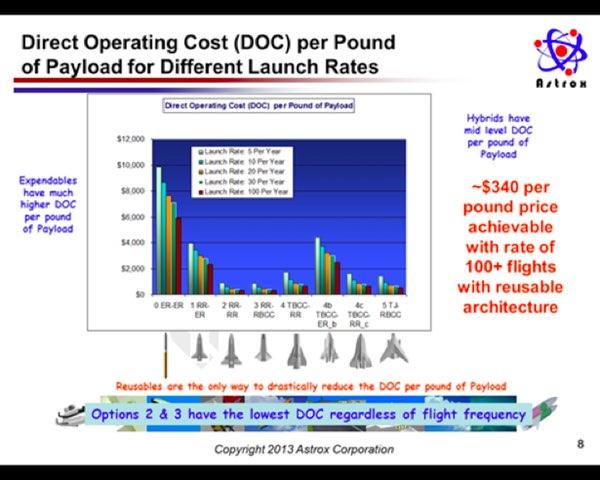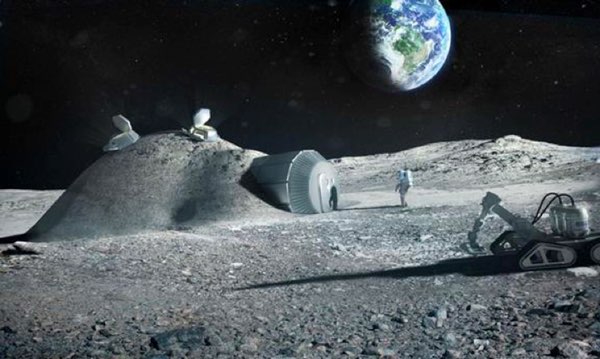To the Moon, Uncle Sam!by Ajay Kothari
|
| It is time to marry that spark with the latest innovation of robust reusable rocket revolution, or the “4R Club” as I call it. |
I still remember—although details are somewhat cloudy now, the gist of it is still clear as bell—the night when my teen and toddler brother and sisters, my father, some workers on the farm, and I sat around a fire, on a somewhat cold night, in the middle of a jungle, and, with an occasional roar of a panther in the background, listened to a decrepit old radio. It was the late ’60s in Western India, on my father's farm, and we were all very excited.
We were trying very hard to listen, amid heavy static, to the live broadcast of a NASA capsule splash-landing in the ocean, after a journey around the Moon. We were amazed and awestruck that NASA and the United States could send a craft hundreds of thousands of miles and still have it come back and land in a pre-designated, three-mile-radius area—and do that safely.
Our respect for what the US could do, which was already fairly high, increased immensely. NASA was amazing, and it symbolized the United States for many around the world. What a country, this America! What incredible people! It was hard to control the desire to come here, study aerospace, get a PhD, become a rocket scientist, and work in this field.
The Soviet Union also did spaceflight but would announce its ventures after the fact. Not the US. I thought, “This is where the next stage of evolution of human beings is occurring”—an intellectual evolution. It was very exciting. It was very satisfying. It was transparent. And it was not just NASA. America at that time was also abuzz with many creative questions, and with people’s free right to pursue the sometimes unlikely answers.
What happened to that excitement, that spark?
It is sad for a child of Eastern genes to see this in the West. Innovativeness, talent, and intelligence, mated with hard work that used to be appreciated in a Western society, including in US, have been replaced to some extent by dislike for those values in favor of mediocrity. Yes, the dumbing down of our values has occurred that should not be tolerated. While all people, the weak and strong, should be welcome and embraced, the society has to find ways to value the exceptional innovators as well.
| To go to Mars, SpaceX wants to refuel the upper stage in orbit a few times before sending it off to Mars. That’s a good idea, but we should do that for the Moon instead. |
It is time to marry that spark with the latest innovation of robust reusable rocket revolution, or the “4R Club” as I call it. It is time to go to the Moon and build small habitats, like small villages that humanity lived in ten thousand years ago at its civilizational dawn. With the “4R Club,” it can be done considerably more cheaply than otherwise done using expendable rockets. The relative cost to put one pound into orbit, which is now $7,000 to 9,000 can be reduced to about $500 for the fully reusable option (see “Robust and reusable?”, The Space Review, April 14, 2014). The same ratio of cost, about 12–15, would hold for sending payloads to the Moon. Setting up Moon habitats would necessitate many launches, which can be done much more cheaply using the “4R Club.” We can perhaps start with the so-called hybrid option, which normally means a reusable first stage and an expendable upper stage; it may less cheap than fully-reusable vehicles but would amount to smaller vehicles.
 |
SpaceX, Blue Origin, and DARPA are already developing this technology for the first stage. To go to Mars, SpaceX wants to refuel the upper stage in orbit a few times before sending it off to Mars. That’s a good idea, but we should do that for the Moon instead. Why not then use the tanks of the expendable upper stage as habitats? DARPA’s plan of ten flights in ten days for its XS-1 program is certainly a step in that direction, in fact a real “giant leap” for humankind.
Why the Moon and not a jump to Mars? Because we need learn to live and work on bodies without an atmosphere for hours at a time, maybe days. Because we need to learn to build structures in those environments first. We need to become solid, unmitigated, confident experts in it first before venturing further out to places that may be too far to send help to. We need to iron out all the kinks first, certainly the major ones. We have such to experiment on which is also close enough. Use it.
| No, wishing to go to Mars is not wrong. We will someday, but not just yet. It should not be the next step. |
And of course, because if there is a heart attack, the doctor is only a few days away, not several months! A doctor can make a Moon house call, or a plumber or an engineer, or a rocket scientist herself. It is certainly considerably less risky than putting many persons’ lives at risk by going to Mars, more rewarding, and of course considerably cheaper. Imagine how much easier and surer our venture to Mars would be after having such experience and expertise.
No, wishing to go to Mars is not wrong. We will someday, but not just yet. It should not be the next step. Not without having spent years on the Moon, not without having learned to work in such an inhospitable environment.
But what about looking for an asteroid to learn from or learn on? Why? We have this beautiful object that has been our constant companion for billions of years, faithful, with zero chance of orbital changes. Why look for an asteroid when the opportunity has been staring you in the face every night? It is the Moon, Uncle Sam! The Asteroid Redirect Mission (ARM) needs to be shelved.
The Moon village will surely be another “Go West, Young Man” project. In this case “Go Up, Young Person.”
